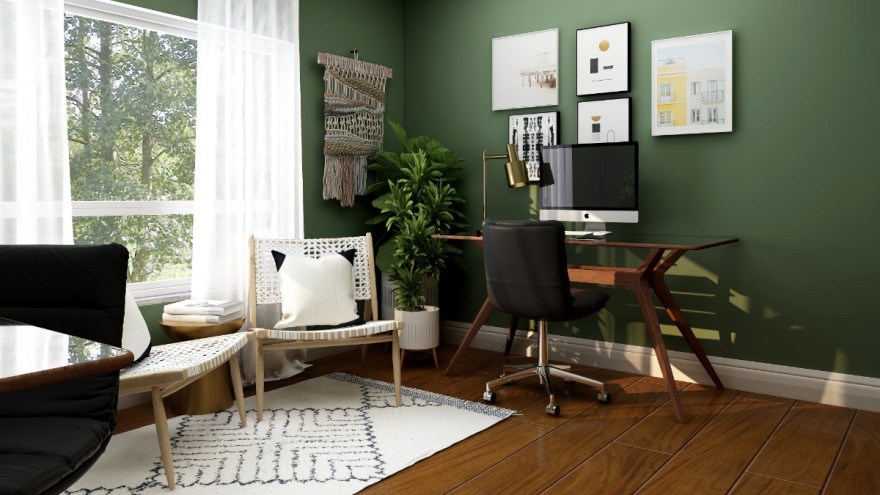The home office between living and workspace
Home office, multi-space, New Work: familiar keywords that are being heard more often since corona. With these, the need for functional furniture and smart space solutions has also been growing rapidly. What will the workspace of tomorrow look like when the kitchen table temporarily becomes a desk and virtual meetings take place in the living room?

Photo: Collov Home Design auf Unsplash
In this article
Reimagining workspace
Co-working and multi-space concepts provided the start and opened up old office structures into flexible usage areas. The home office is the logical further development, yet, the requirements of working from home are changing: instead of a dedicated office, we rely on a modern form of living with the option to work. The question of work-life balance has also become a question of space and of functionality.
And the acceptance of the domestic workspace is increasing: the Fraunhofer Institute sees increasing values for performance and satisfaction in the home office in its survey. A survey in the USA also showed that 86% of those surveyed liked working at home, 47% of them even very much so. Thanks to an increased focus on digitalisation, initial hurdles were quickly overcome. The "new normal" will leave deep traces in our work routine over the long term – including in the furniture industry, which is also adapting internationally to the increased demand for well-designed and functional items of furniture for working in one's own four walls.
Home office international
The big cities of the world are the home of New Work and innovative solutions. New thinking needs to take place where there is little space. Sophisticated micro-apartments without their own offices are especially common in metropolises like New York, London or Shanghai. One can also observe the most important trends in a concentrated form there, which then successively resonate elsewhere:
From the living to the "life room":
According to a study of the British department store chain John Lewis , the living room is the most-used room in the United Kingdom. As a place for watching television, working, sleeping, meditating and many other activities, furniture with several layers of usage are increasingly in demand. Ultimately, private tasks calling for solutions also come up in addition to paid forms of work.
Multifunctional furniture:
Tables and chairs that are both elegant and ergonomic are asserting themselves. Folding tables and concealed drawers for quickly getting work out of your sight when you finish the workday are also important components.
The demand for tables with height adjustment, at which one can work both seated or standing, also grew in many countries. Up to now primarily found in classic office premises, these usually clunky and highly technological tables present a very special design challenge for private spaces. In ELLE Decor, two American designers report how they attractively designed their adjustable desk for home.

With "Soft Work", Vitra has developed a modular sofa concept that incorporates docking stations, shelf space and partition walls in a versatile way and is not only suitable for public spaces. (Photo: Vitra)
More private sphere:
Movable room partitions can functionally delimit an area and prevent distractions. Even a fan screen of paper as an Asian style element or this foldable workspace solution of acoustic fleece from Wilkhahn temporarily provide more focus. Additionally, the current trend has also increased sales of headphones, which allow for more private sphere.
Home fitness studio:
A home office with a health focus doesn't stop at the theme of ergonomics. Especially in the megalopolisies of China, fitness apps have experienced strong growth in recent months. Sitting balls are thus also experiencing a revival, while furniture with additional functions for the home workout are conquering the market.
A question of style:
The temporary workspace must remain homy despite all functionality – instead of grey and black, warm colours and round forms dominate. desks for the home office are now sophisticated and often dispense with practical storage space. The study by John Lewis also see this change in numbers: sales of stylish, small desks have increased by 80 percent in the United Kingdom. The appropriate chairs combine ergonomics and aesthetics.
Smart solutions:
New work is now indivisibly linked with the digital transformation. These forms of work are increasing the international demand for technical innovations, and manufacturers are listening: from the coffee table with integrated charging station for the smartphone through daylight lamps and smart loudspeakers to networked household devices.
The office 2.0
The first companies are reducing their office spaces in prestigious but expensive urban centres in favour of the home office in the course of the New Work movement. When commuters spend less time on the way to work, they have more time for friends and family. The furniture industry must keep this transformation in mind and characterise it with its own innovation. Always in focus: the individual customer with his or her individual needs.




